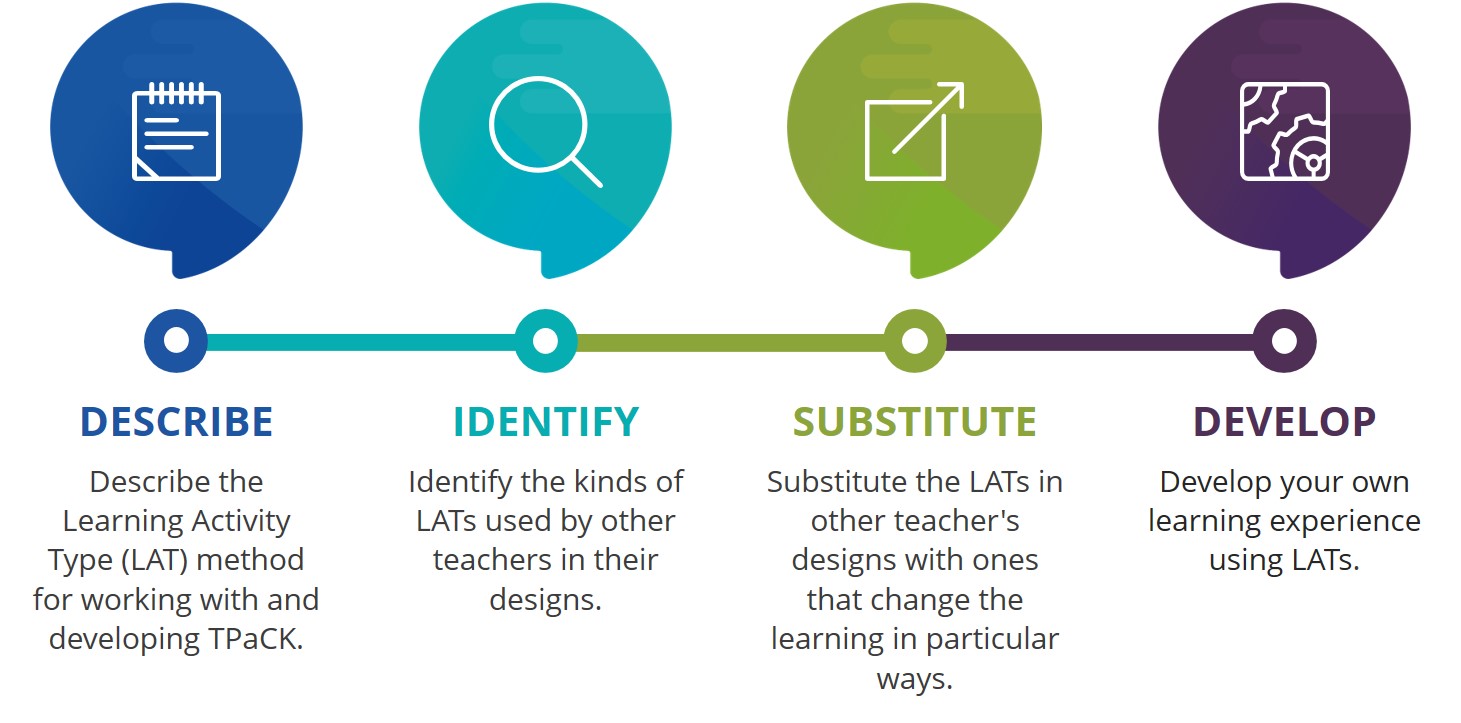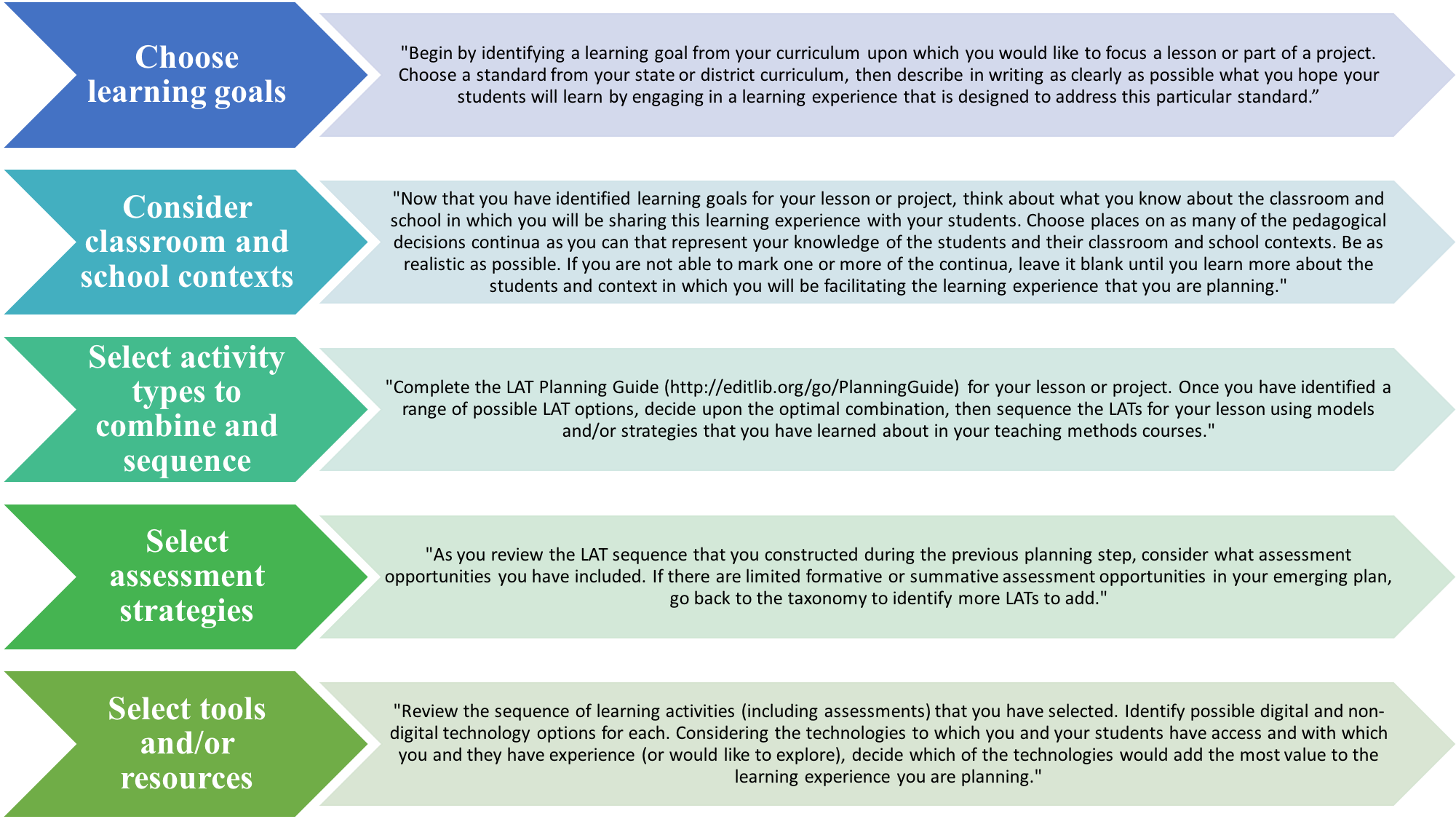Unit: TPACK in Specific Subjects


This unit is part 2 of a 2 part series. In the previous unit, we introduced the TPaCK framework and explored some of its basics. The assignment for the last unit was to play the TPaCK game which should have started to help you think about how you could apply TPaCK to your subject and classroom.
If you have not yet completed Unit 25, you should do so before starting this unit.
In this unit, we will take a much closer look at how to use TPaCK to think about the integration of technology in a number of different subjects as well as how to plan learning activities using the framework.
By the end of this unit you will be able to:

Click on the link below to start the lesson.

In summary, the process is as follows:

Even though the process is presented here linearly, there is nothing stopping you re-ordering the steps or revisiting steps as you go.
Follow this process to design a learning experience of your choice that would be sufficient for at least 2 hours of learning. This need not be in one go and could be spread out over several lessons. Refer to the LAT taxonomy for your particular subject for ideas about learning activities and supporting technologies to include in your design. You can review the LATs for your subject here.
Here is a TPaCK Lesson Plan Template that you can use to help structure and organise your assignment.
Attributions:
References:

Teachers' ICT Integration Course by Matthew Goniwe School of Leadership and Governance is licensed under a Creative Commons Attribution-ShareAlike 4.0 International License with the exception of the following resources:
All content not licensed under a Creative Commons license is all rights reserved, and you must request permission from the copyright owner to use this material.